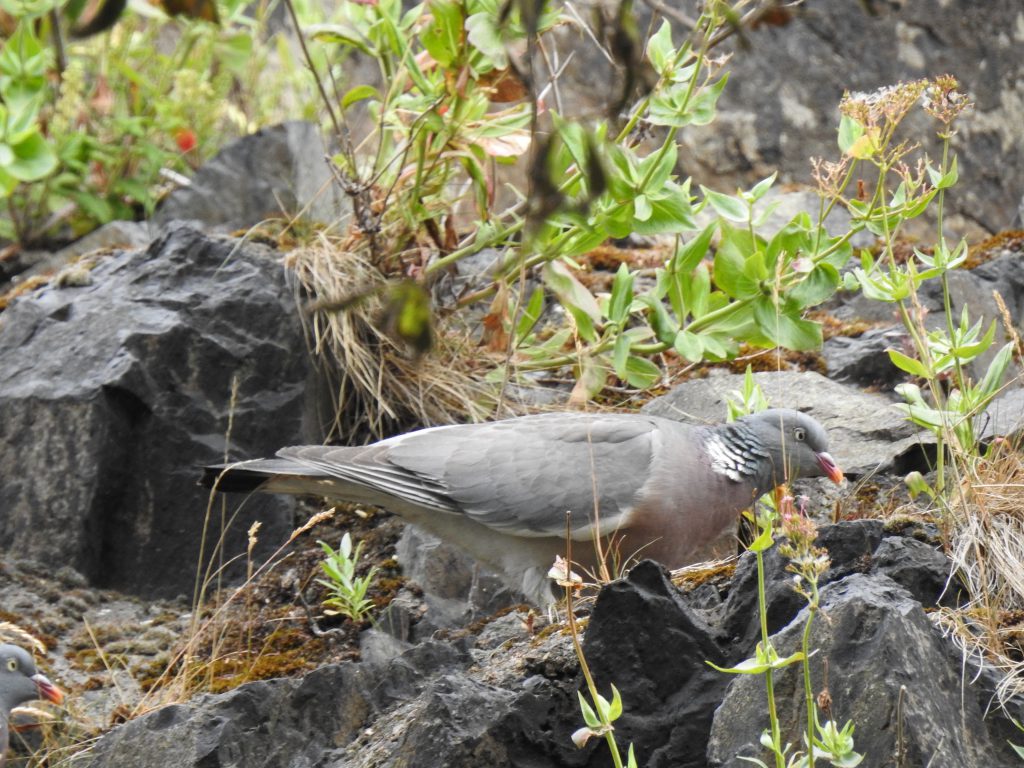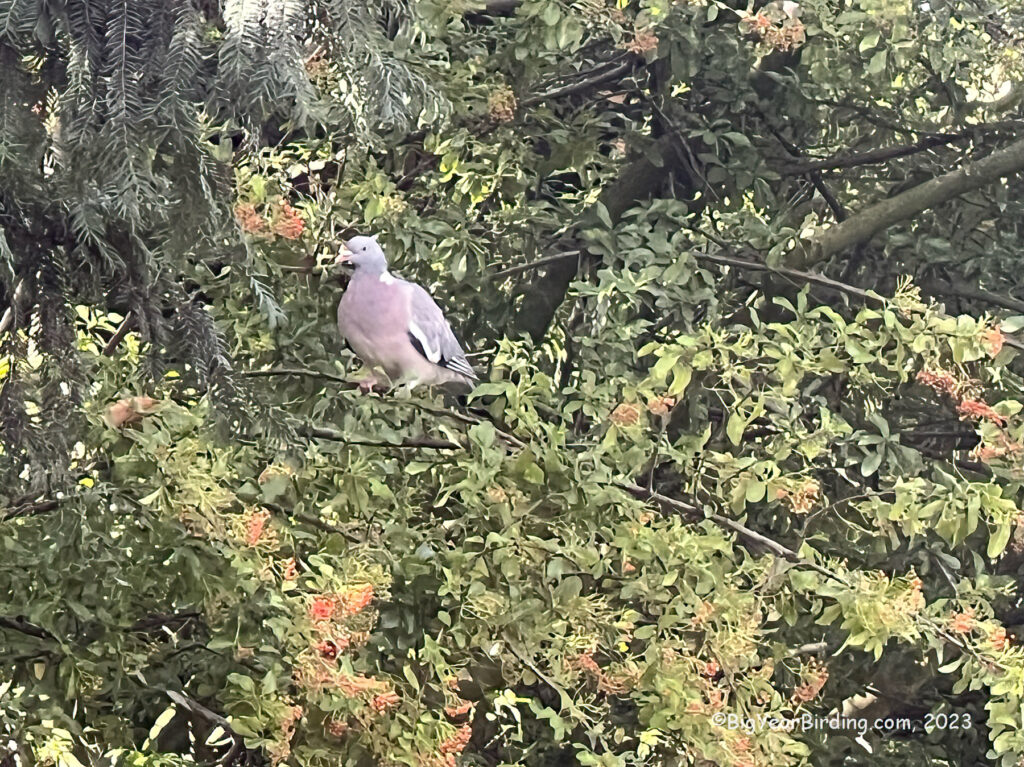
The Wood Pigeon (Columba palumbus) is a medium-sized bird of the family Columbidae, native to Europe and parts of Asia. It is one of the largest species of pigeon, measuring up to 16 inches in length and weighing between 14 and 20 ounces. Its distinguishing field marks include a large, plump body, a distinctive white patch on the neck, and a distinctive “cooing” call.
In terms of migration, Wood Pigeons are mostly sedentary, although some populations in northern Europe may migrate short distances to avoid harsh winter weather. The species is known for its adaptability to a wide range of habitats, including woodlands, parks, and urban areas, and can often be seen perched on rooftops and other high points.
Wood Pigeons are primarily herbivorous, feeding on a variety of plant material such as seeds, berries, and leaves. They will also occasionally consume insects and small invertebrates. The species is known for its habit of “cropping” or swallowing food whole and regurgitating it later to chew and digest more thoroughly.

In terms of breeding, Wood Pigeons typically mate for life and form long-lasting pair bonds. They build flimsy nests of sticks and twigs in trees or shrubs, and lay one or two eggs per clutch. Both parents take turns incubating the eggs, which hatch after around 17 days. The chicks are fed a mixture of crop milk (produced by the parents) and regurgitated food, and fledge after around 20 days.
Overall, the Wood Pigeon is a common and widespread species throughout much of its range, known for its large size, distinctive appearance, and adaptable behavior. While not a migratory species, it can be found in a variety of habitats and is an important part of many ecosystems.

